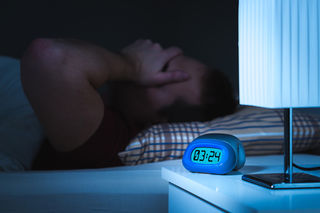Sleep Disrupted
What extreme sleep disorders can teach us about the brain.
By Devon Frye published August 15, 2019 - last reviewed on October 1, 2019

If we’re lucky, we spend a third of our life sleeping comfortably. The less fortunate, however, find nighttime far from restful. Commonplace disorders like insomnia can diminish mood and productivity; those with rarer sleep disturbances may find their entire lives upended by bedtime behavior. In The Nocturnal Brain, neurologist Guy Leschziner explores what extreme disorders can teach us about sleep—and how we can rest better.
Sexual Slumber
Sleepwalking is a well-known example of non-REM parasomnia, or unwanted behavior occurring in non-dreaming sleep. When the behavior turns sexual—whether self-pleasure or intercourse—it’s termed sexsomnia. “The brain can exist in different sleep stages at the same time,” Leschziner notes. In sexsomnia, those regions controlling movement awaken, while those responsible for memory and rational thought stay asleep. Though most sexsomniacs don’t seek help, some cases—in which sleepers appeared to force themselves on unwilling partners—have resulted in criminal charges.
No Fairytale
So-called “Sleeping Beauty Syndrome” (officially Kleine-Levin Syndrome, or KLS) is a rare condition in which sufferers experience short-lived periods of intense sleepiness, ravenous hunger, hypersexuality, and other bizarre behaviors. “Once a bout is over, these individuals are completely normal,” Leschziner says. But because personality changes dramatically and dissociation can occur, KLS is frequently misdiagnosed as psychosis or another mental ailment.
The Nightman Cometh
Many of us have experienced hypnagogic hallucinations, the often terrifying perceptions—combined with paralysis—that occur as we hover between sleep and wakefulness. Hallucinations tend to comprise shadowy figures nearby, often perceived as intruders. But a hallucinated figure may actually be someone much less menacing: you. “During wakefulness, we know where we are in space because of our parietal lobe,” Leschziner says. When the body becomes paralyzed during REM sleep, the parietal lobe may become confused—creating a projection of our “self” elsewhere in the room. If we feel stressed or anxious about sleep, such figures are more apt to appear frightening, but delaying bedtime to avoid hypnagogia can, paradoxically, worsen it. “When we’re sleep deprived, we’re much more likely to hover between wakefulness and REM sleep,” Leschziner says.
Facebook image: Motortion Films/Shutterstock
LinkedIn image: Stock-Asso/Shutterstock
